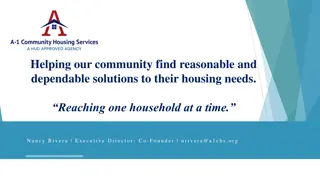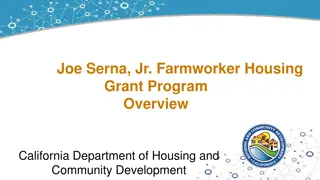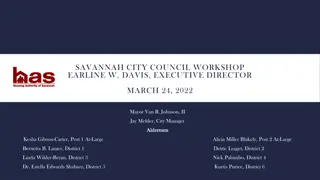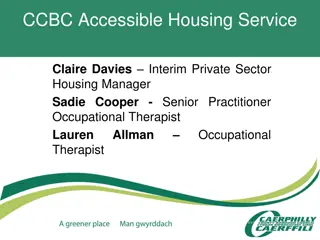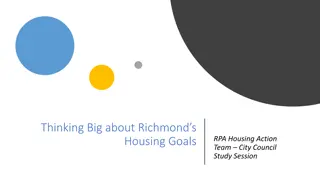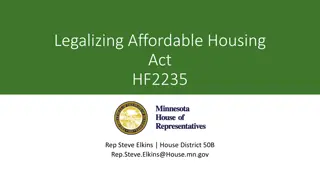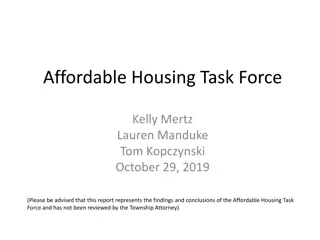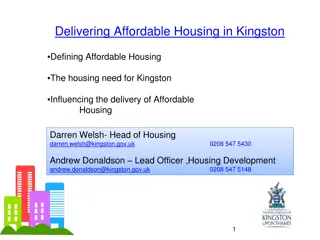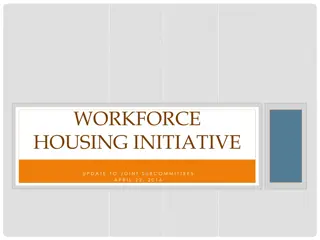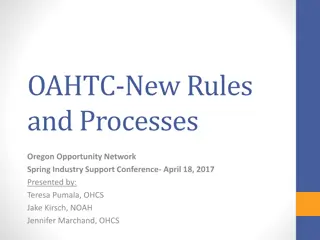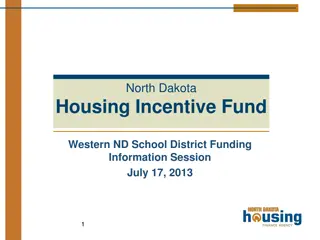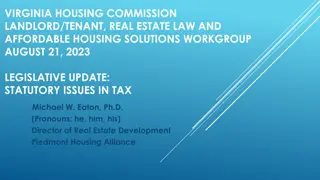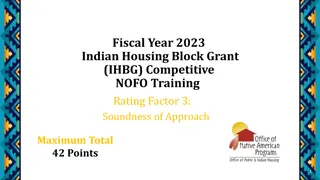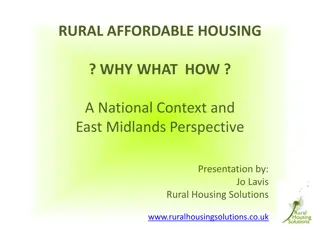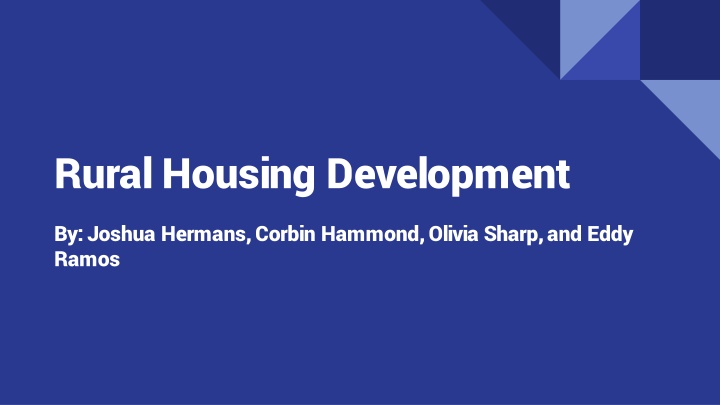
Challenges and Solutions in Rural Housing Development
"Explore the challenges faced in rural housing development such as shortages, economic impacts, and attracting talent. Discover strategies like tax credits, incentives, and proper planning to address these issues and promote sustainable growth. See how initiatives like House Bill 4079 aim to expand boundaries for affordable and workforce housing. Delve into the dynamics of multi-family housing and city revenue generation to support community development." (291 characters)
Download Presentation

Please find below an Image/Link to download the presentation.
The content on the website is provided AS IS for your information and personal use only. It may not be sold, licensed, or shared on other websites without obtaining consent from the author. If you encounter any issues during the download, it is possible that the publisher has removed the file from their server.
You are allowed to download the files provided on this website for personal or commercial use, subject to the condition that they are used lawfully. All files are the property of their respective owners.
The content on the website is provided AS IS for your information and personal use only. It may not be sold, licensed, or shared on other websites without obtaining consent from the author.
E N D
Presentation Transcript
Rural Housing Development By: Joshua Hermans, Corbin Hammond, Olivia Sharp, and Eddy Ramos
Summary Shortage of housing Impairing economy Difficulty attracting talent Suffocating expansion Reduced taxes 60% of median income Workers middle-class
Rural Risk Changing economy Single-purpose towns EOU in La Grande PSU in Portland EOU strategic review Enduring and durable niche
Multi-Family Housing Single-family vs. Multi-family Renters vs. Homebuyers Most cities lose money from residential development Gain from industrial/commercial
City Revenue Employers petition on job opening List of posts needing to be filled If housing is an issue: Community can see housing needs visually Example: Data center between Port of Morrow-Umatilla (5, 50-70, $70,000) From their primary source of revenue Employers may promise expansion if more workers
Tax Credits Motivation for county Affordable housing Blue Springs Crossing Island City Guardian Real Estate Services $70,000/year for 10 years Workforce housing
Incentives Current budget Incentives pay themselves off Short term incentives State gets property tax until paid back County gets paid up front; increases long-term income State gets steady stream of income
House Bill 4079 Version 2.0 2016 Session Pilot project communities Local governments expand Urban Growth Boundary (affordable housing) Do the same for workforce Communities not yet chosen
Proper Planning Communities need to maintain a 20 year supply of land Budgetary difficulties Land use planning gets cut Communities completely unprepared to accommodate rural housing development Rural communities hit harder Pool resources at state level?
Website One central website Bidding, contracts Better organization Bridge the gap between Urban and Rural developers. Oregon developers not just regional developers. Site host? OHCS? State Department of Housing?
Marketing Increased awareness Industry & government involvement Consistent communication
OHCS 46% of local officials and real estate developers Had no contact with OHCS in past 3 years Source: Association of Oregon Counties Broaden mission State Housing Department OHCS
Zoning Dilemma OR Regional Housing Study: Local zoning is cited as being in the top five reasons there is a housing crisis State land use laws are cited as being equally responsible as Local Zoning Many city zoning and ordinances concerning housing development are outdated The demand for housing has increased and the available space hasn t been updated to accommodate this growth (urban growth boundary). Planning is outdated due to lack of funding Can be addressed through state funding Rural Oregon is unique in the way that it has the space to develop (unlike Portland, etc) if it is zoned correctly
Inclusionary Zoning Definition: municipal and county planning ordinances that require a given share of new construction to be affordable by people with low to moderate incomes Used to create more affordable housing by mandating a % of development to be affordable Debate as to whether it is the solution Side A: The supply of affordable houses increases Side B: The requirements will deter developers from developing Alternative Solution Reduce overall developing requirements instead of increasing to increase total supply, economic supply and demand will then balance out driving housing prices down
Enterprise Zones Definition: an area in which policies to encourage economic growth and development are implemented Traditionally used for industrial, use the model for housing Types of Incentives include: Tax concession (a reduction in the amount of tax that has to be paid) Infrastructure incentives (roads, water, sewer, etc.) Need to fully align with overall objective (A., 2015)
Utility Service Coverage (Cost Comparison) La Grande Portland Electricity $92.08 $99.99 Water $63.54 $56.00 Sewer $38.05 $59.85 Solid Waste $21.25 $27.00
A solution for NIMBY The opposing of new development On average an apartment is 861 sq ft vs. average duplex is 900 sq ft. Cost per sq ft is between $85 to $125 nationally Potential for development in Island City and Union Results are seen sooner with duplexes
Flow of Workers Right: Full-time jobs Below: All jobs
Isolated Infrastructures-limited access ex) Railroad, Trucks, Airports Services vs. Production Internet Service - Rural areas 55% vs 94% Urban broadband service (National Broadband Map)
Vulnerable Dependent Aging Workers
Solutions Expose Natural features of area ex) Bend-Deschutes River and Cascades Diversity Ease land use planning laws
Conclusion Workforce housing falls through the cracks Solutions to close the gap Pooling resources, community resources, expanding services Zoning Needs to be updated Enterprise Zoning shows promise and merits further exploration Cost of living in rural communities needs to be considered Encouraging and inviting new and different business can help attract new workers to live in rural areas.
Special Thanks Becky Steckler, Oregon Chapter of the American Planning Association Gordon Howard, Principal Urban Planner Phillip Scheuers
References Oregon Office of Economic Analysis Website (price to income ratio map) Electricity Local (http://www.electricitylocal.com/states/oregon/la-grande/#ref) US Census (onthemap.ces.census.gov) (flow of worker graphs) Pinnacle Architecture for the image of Blue Springs Crossing

